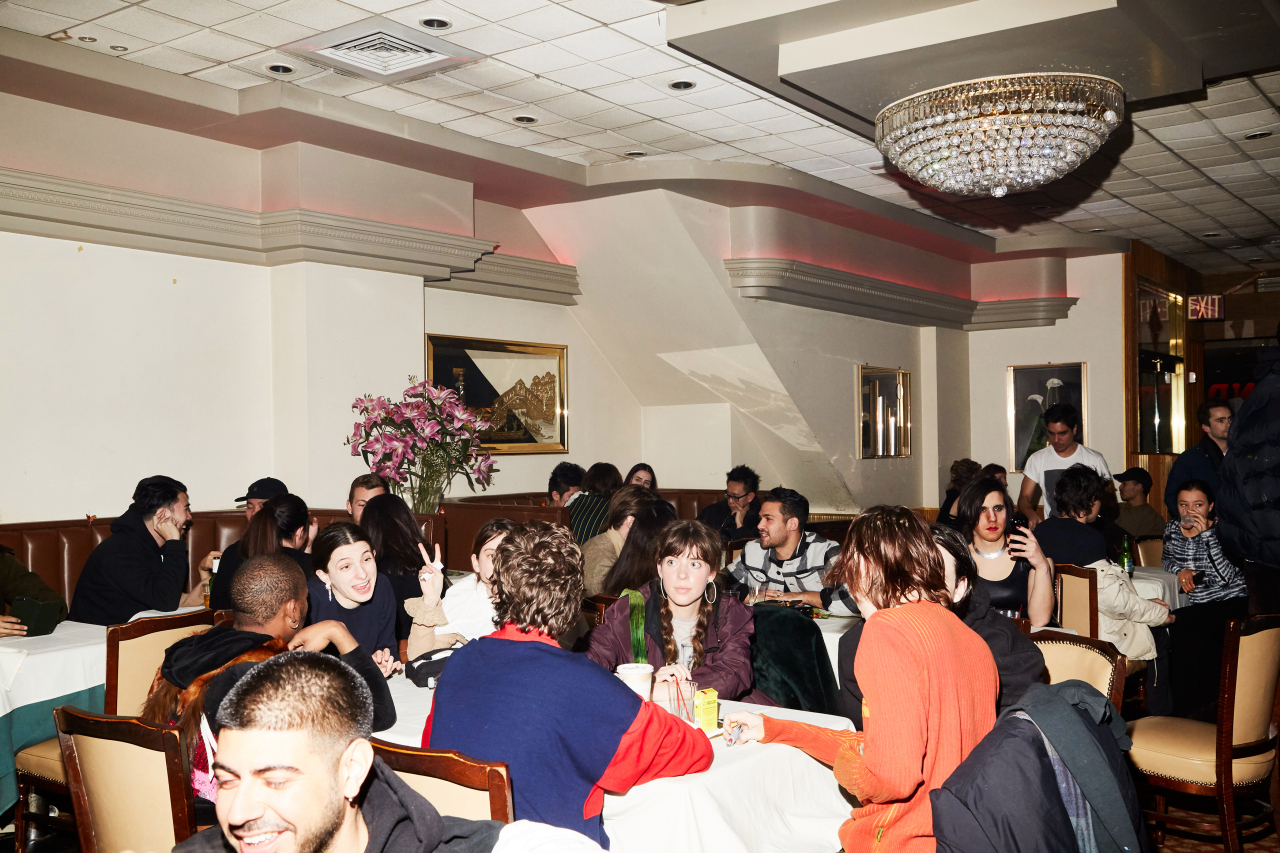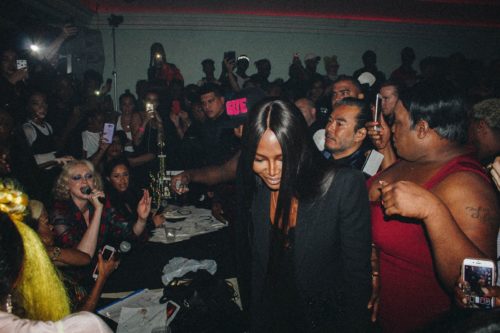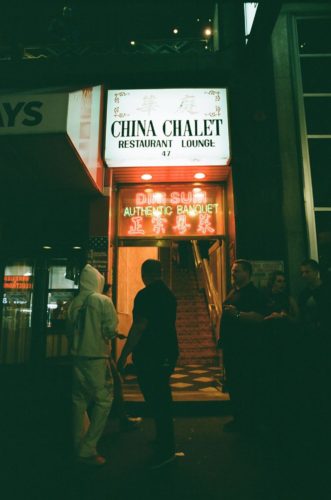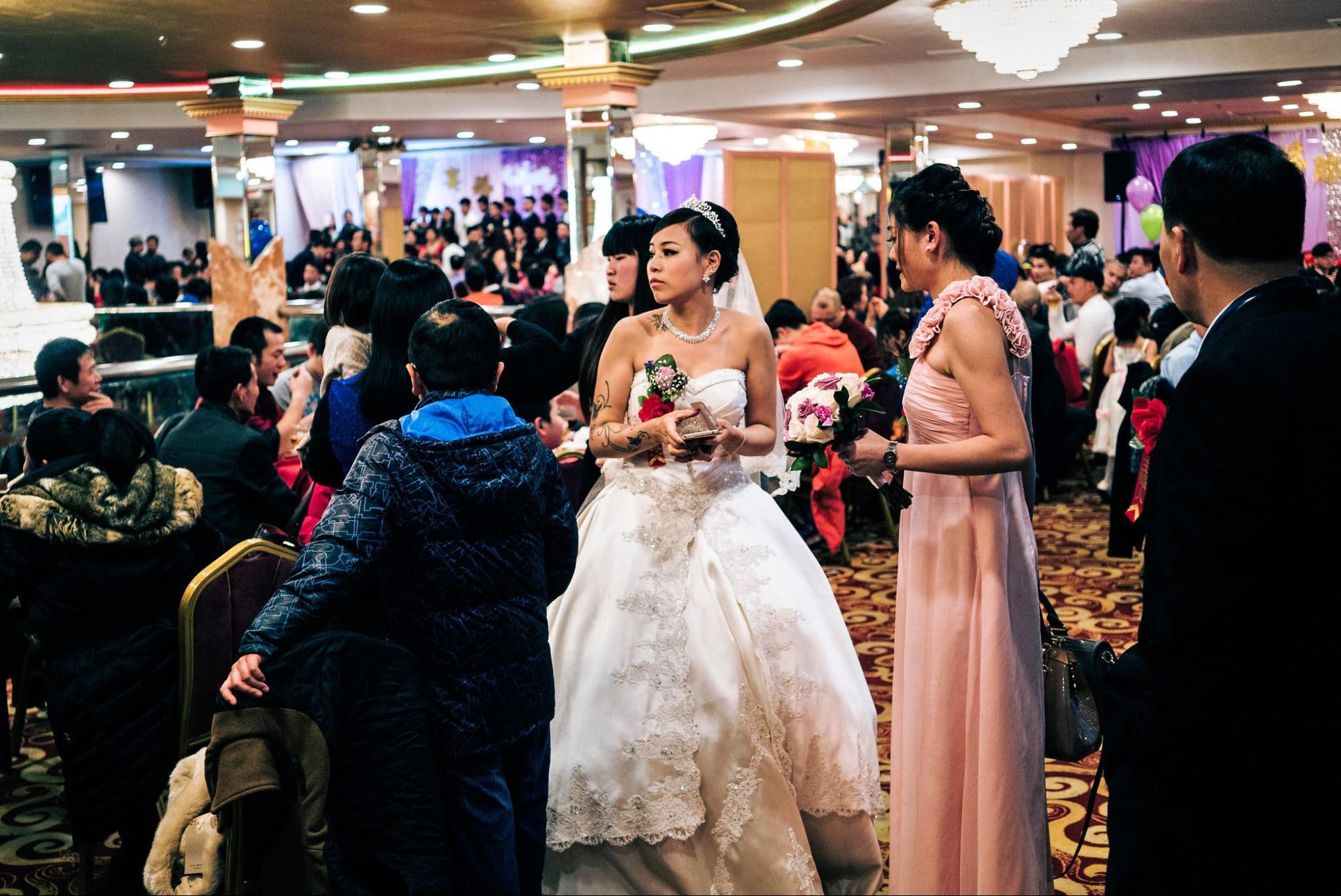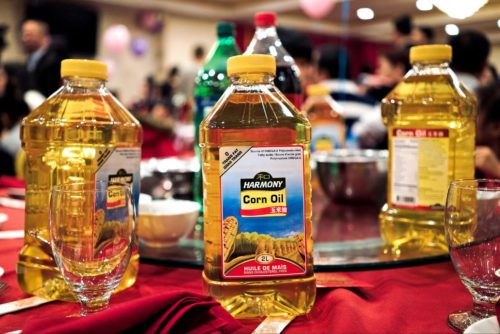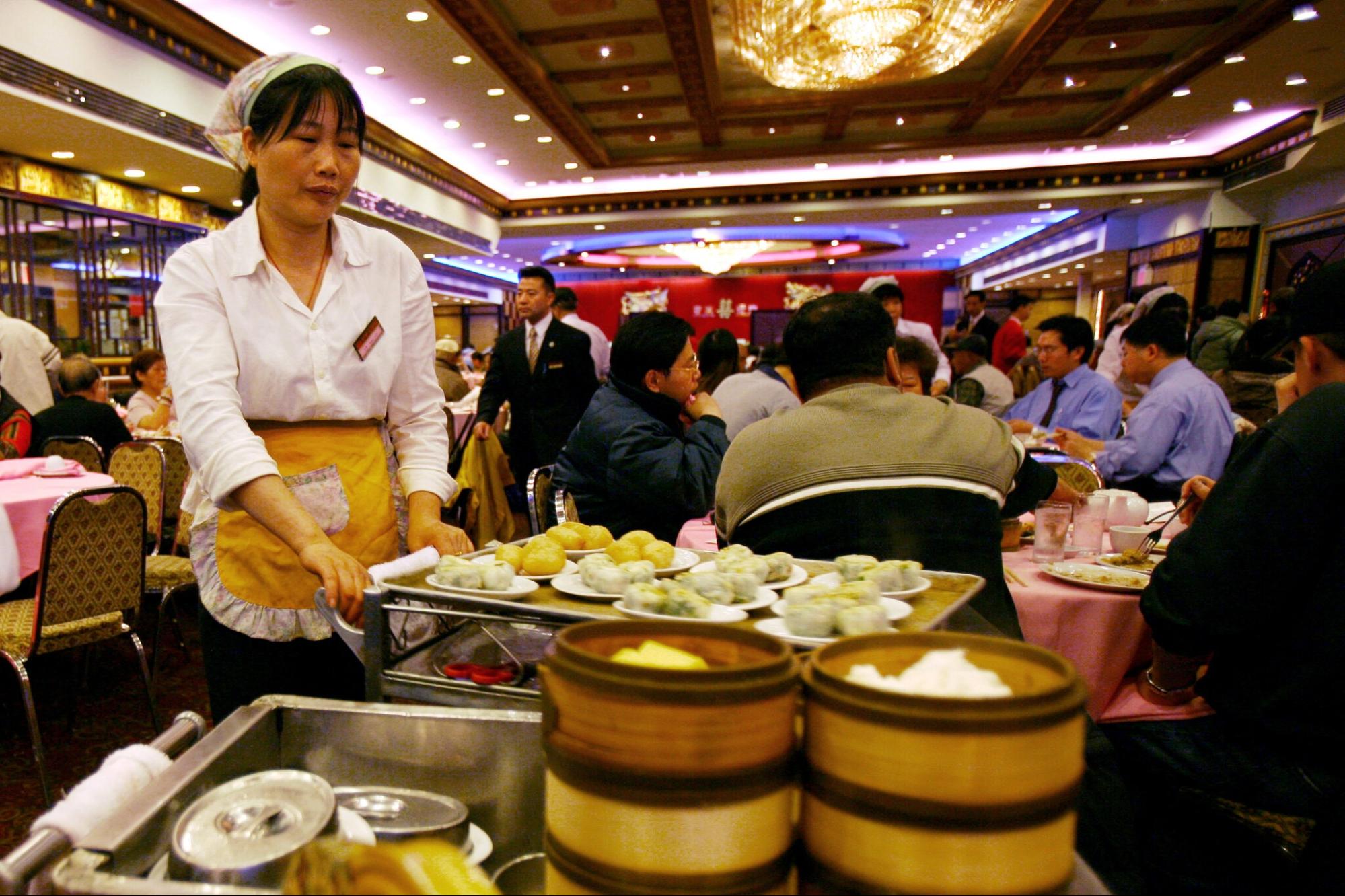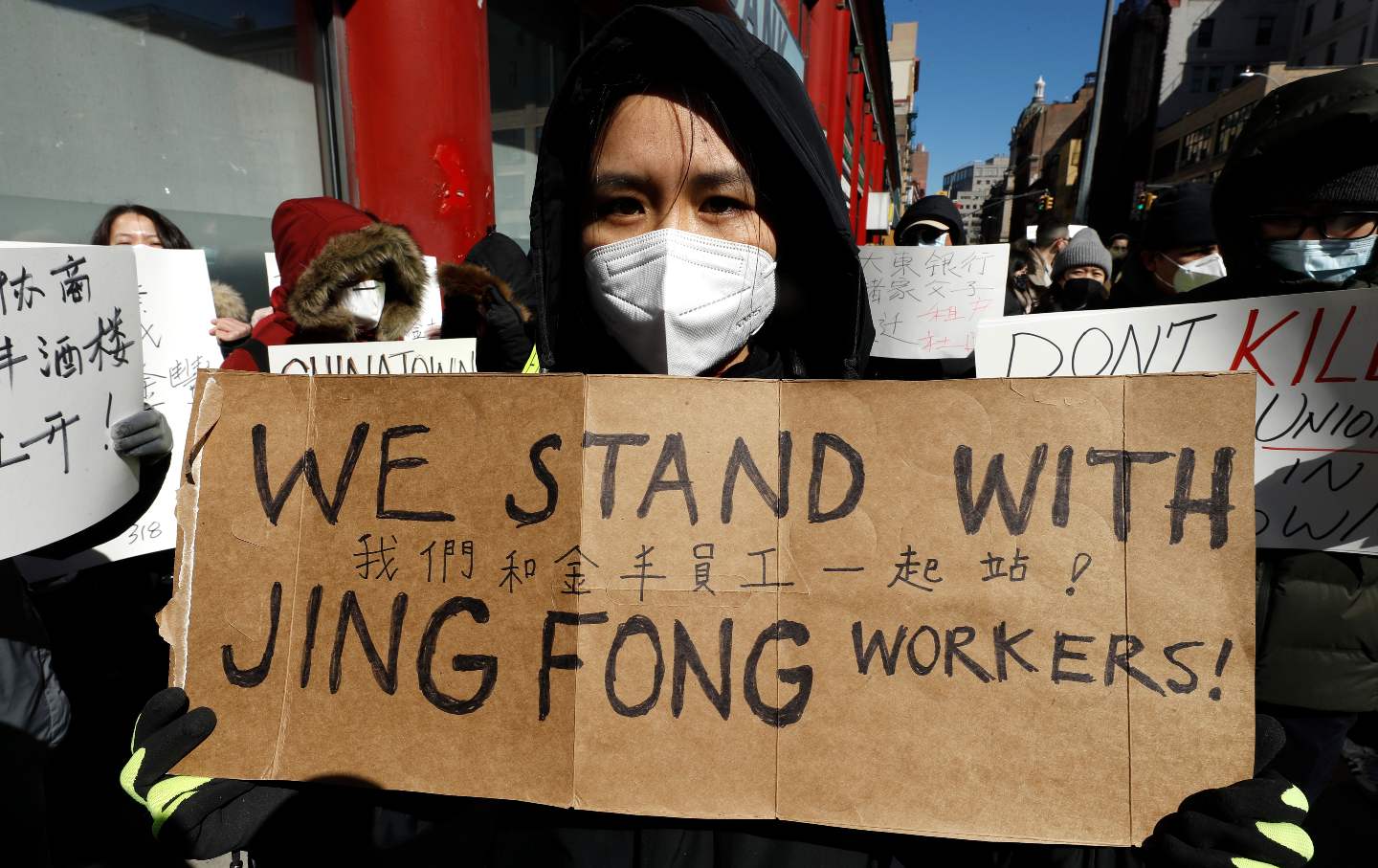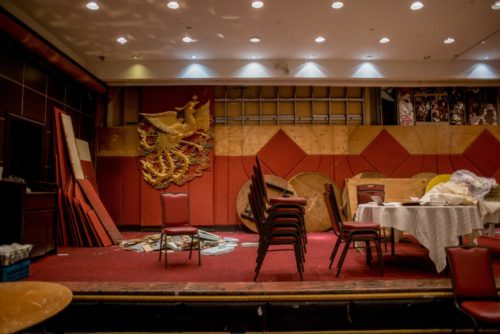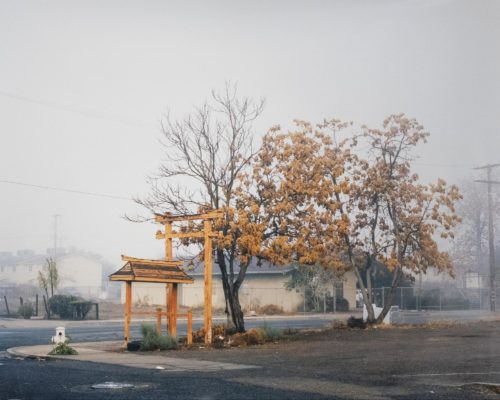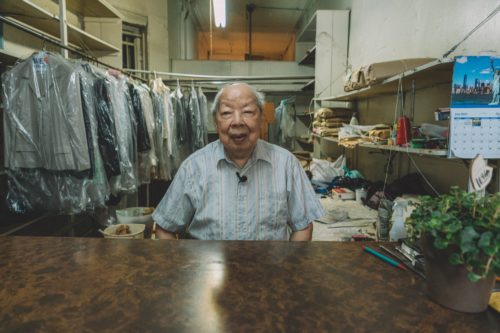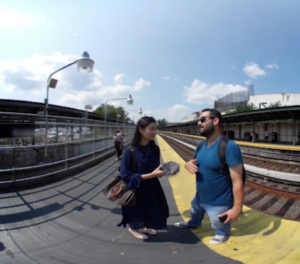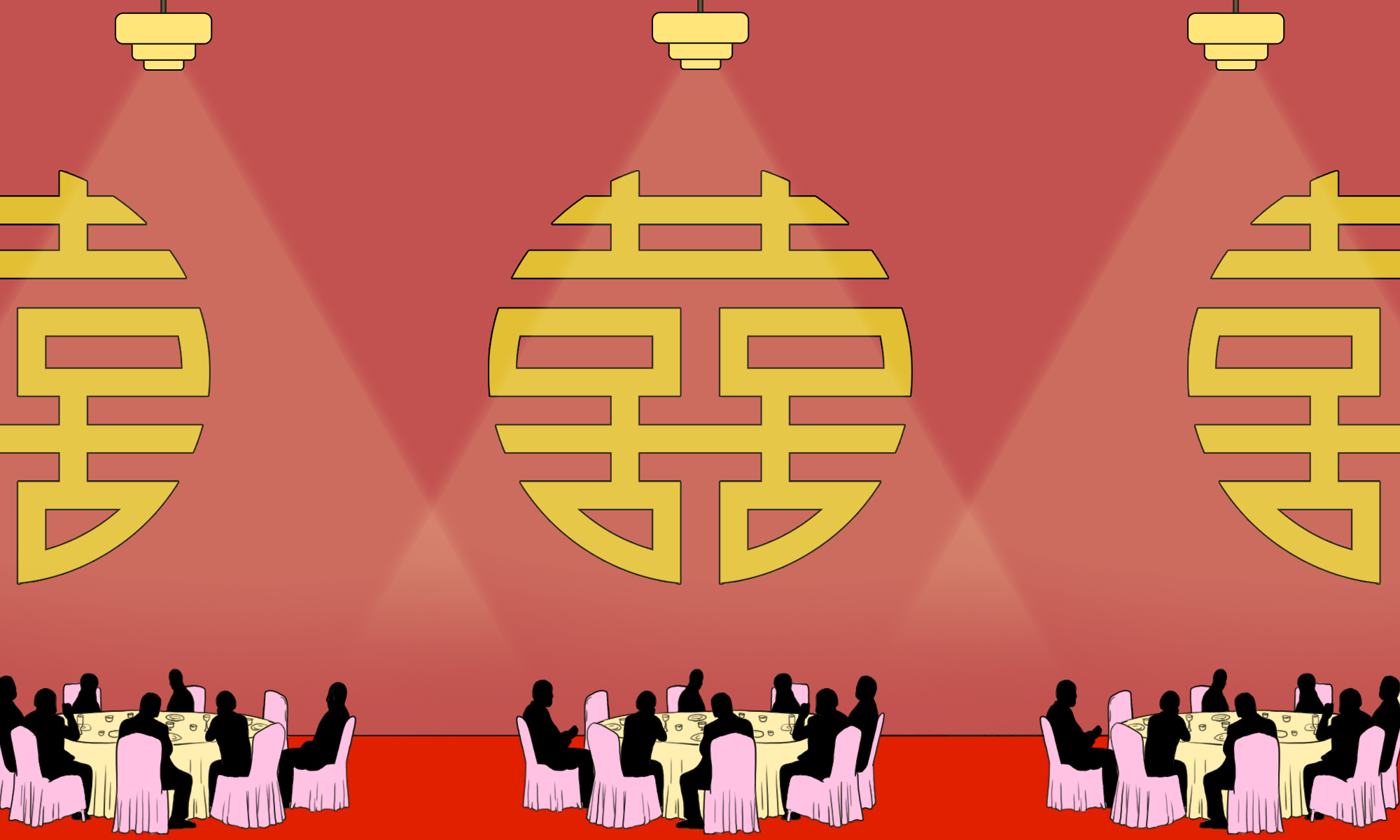
A survey of some of New York’s most iconic Chinese banquet halls, their tumultuous histories, and their significance in people's lives.
Millions are getting vaccinated. The first buds of spring shine with dew. It’s been over a year, but we can finally begin to imagine a life of communal eating, glistening chopsticks clattering against each other as they fight for the last frog leg, large banquets where friends and foes alike can meet, eat, drink, and rejoice.
For many, banquet halls provide an elevated form of dining, even for an ostensibly casual meal, while large gatherings can become celebrations of high drama and humor. Through the course of a meal, a whole Shakespearean play can take place, a phenomenon illustrated in many films, such as Edward Yang’s coming-of-age story Yi Yi, Lulu Wang’s family drama The Farewell, and Ang Lee’s aptly-named The Wedding Banquet, in which a closeted Taiwanese man, at the behest of his conservative parents, goes through the turmoil of planning a traditional Chinese wedding banquet with a woman while his true love watches from the sidelines.
The beauty of these banquet scenes is in the way a whole cast of strangers and family members can come together over food and drink. The opposing forces of community and alienation, tradition and spontaneity, are constantly at play.
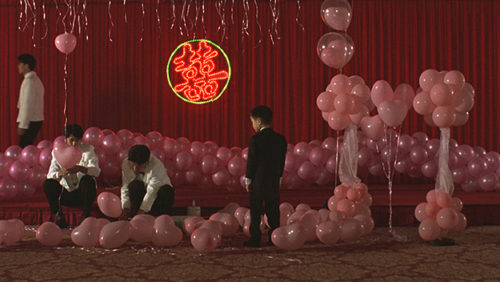
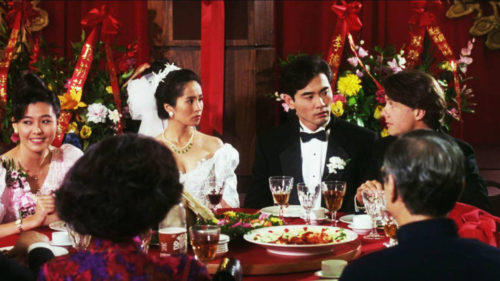
But sadly, banquet halls in New York will be harder to find this spring. Jing Fong, the iconic banquet hall and dim sum restaurant in Manhattan’s Chinatown, closed its palatial dining room on March 7. Countless posts lamented the end of an era. Unionized employees are currently trying to take over Jing Fong’s ownership and save this historic space, while local community members are still holding protests and rallies, as well as boycotts of the landlord’s other restaurants (Jing Fong’s much smaller Upper West Side location is still open).
Jing Fong is unfortunately neither the start nor the end of this trend: Chinatown was hit particularly hard during the pandemic, with xenophobia playing a part in hurting Asian-owned businesses.
Below, we take a brief survey of some of New York’s most iconic Chinese banquet halls, their tumultuous histories, and the significant role they played in people’s lives.

Port Arthur
Opened in 1897, closed after “85 years,” give or take (sources vary)
Port Arthur was one of the first banquet halls in New York City, named after a port city in northern China now called Lüshunkou District (in Dalian, Liaoning province). It was opened in 1897 by Chu Gam Fai, a Chinese immigrant, and became the first restaurant in Chinatown to receive its liquor license, a major coup. One floor of the restaurant was for general dining, and the upstairs featured an elaborate banquet set-up reserved for larger parties and celebrations such as weddings.
The restaurant became a haunt for locals seeking authentic dishes that reminded them of home, while tourists viewed it as a hotspot for a night of “adventure,” which meant eating dishes like chop suey off tables inlaid with mother of pearls. In later years, the restaurant even had an escalator to its second floor, with the ground floor functioning as a gift shop. Unfortunately, the restaurant couldn’t keep up with New York’s ever-rotating codes and regulations, and the owner retired without assigning someone to take over.

Chinese Tuxedo
Opened in 1897, closed in the mid-1900s
Port Arthur was not the only banquet hall to open that year. Chinese Tuxedo was a high-end restaurant offering a mix of Chinese and American fine dining served to a dolled-up crowd. With ornate tables, an opulent chandelier, and an elegant fountain in the center, Chinese Tuxedo represented a sense of luxury that even Americans enjoyed, while still honoring traditional Chinese ideas of feng shui, balance, and harmony.
In 1893 the building across the street became the Chinese Opera House, the first Chinese-language theater on the east coast. The theater closed due to the increasing violence and gang activity on Doyers Street, which was formerly referred to as “The Bloody Angle,” because the curved sidewalk created a dangerous blindspot.
In 2016, Eddy Buckingham, an Australian (and the personal mixologist to Justin Timberlake), opened the new Chinese Tuxedo in the defunct Opera House. Buckington said they would serve “Cantonese with exceptional produce quality,” as quoted in Untapped New York. “For many people, their association with Chinatown Chinese [food] does not necessarily go hand in hand with great quality and great quality produce which is a shame.”
When the new Chinese Tuxedo opened, its menu boasted oysters and beef tartare.

China Chalet
Opened in 1975, closed in 2020
Port Arthur and Chinese Tuxedo would unknowingly start the trend of banquet halls becoming destinations for outsiders seeking something wild and indelicate. China Chalet was a reliable Cantonese restaurant located in the Financial District. By day, it served dim sum-style lunch and dinner to Wall Street bros, families, and tourists. Its decor felt like a relic of old-school glamour, like a jazz singer with a husky voice that was famous 20 years prior. Fading glamour.
By night? It was the place for New York’s most fashionable, streetwise, and, simply put, fun.
After 10 p.m., the restaurant would clear out the tables — this job required a dedicated task force, because soon after, long lines would form outside, necessitating large bouncers — and China Chalet would transform into a hedonistic haven of underage drinking, indoor smoking, hours-long dancing sessions, hours-long make-out sessions, and celebrity run-ins.
The parties started in the early 2000s, when photographer Glynnis McDaris wanted somewhere new and different, unexpected, to have an after-party. Keith Ng, the owner, agreed to a series of after-hour events. Little did anyone know, China Chalet would end up becoming the destination not just for the after-party, but the party
Unfortunately, China Chalet could not survive the pandemic. Ng declined to elaborate on the full extent of why it closed. All that remains: the photos, memories, and gossip.

88 Palace
Opened in 1988, closed in 2020
Fun fact: one of the most popular days for Chinese people to have a wedding in New York is Thanksgiving, when many immigrants who work in the service industry can finally have a day off. So, on Thanksgiving, glass lazy susans replace expandable dining tables, baijiu flows instead of wine, and guests leave with a whole jug of canola oil instead of tinfoiled leftovers.
88 Palace was yet another multi-purpose banquet hall that had an equal emphasis on eating and partying. Located in a mini mall under the Manhattan Bridge, 88 Palace reflected the vast grab bag of reasons to celebrate.
On a quieter weekend morning, it was a dim sum restaurant so familiar to some that it was deemed a second home, where people went with friends and family on a weekly basis. On its busiest day, Thanksgiving, 88 Palace becomes a wedding-hosting machine, its concrete seams practically bursting with Chinese guests attending one of multiple weddings, the parties separated by flimsy dividers.
At night, 88 Palace usually closed. But on some nights, the dining hall transformed into a venue for discos, after parties, raves, and everything in between.
Journalists, photographers, and cultural reporters flocked to these kinds of events. For them, these multi-functional banquet halls harkened back to the glamour of old-school New York, a la Studio 54. There was the enticing idea that behind every closed door could be the most amazing party filled with the most elusive and cool characters. Oftentimes, in their quest to capture the spirit of the event, they lost sight of the space’s intended purpose.
Eliza Dumais, who wrote an article for The Thrillist titled “How Dingy Chinese Restaurants Became Home to New York’s Most Exclusive Parties,” said that places such as China Chalet and 88 Palace were “two-star dim sum joints with absolutely nothing going for them.” In that same article, James Nevin, founder of The Journal, a Brooklyn-based art magazine, said, “China Chalet is not cool, which is why it’s great,” a comment that simultaneously disparages the space while taking advantage of it.
In fact, my research for this piece consistently led me to subtly racist and exploitative opinions of banquet halls; partygoers saw these spaces that were never meant for them as something they were “saving” with their presence.
I wonder what these people thought happened in these banquet halls during the daytime. Why not close the kitchen if the food was subpar? The answer is obvious: because they have significance and meaning outside of “exclusive parties.”
It should be noted that there are many Chinese organizations that use the banquet hall as a source of authentic celebration. For instance, pre-pandemic, the contemporary Chinese store Chop Suey Club hosted a lunar new year celebration at 88 Palace, featuring many local vendors in the community.

Jing Fong
Opened in 1978 at its original space. Moved in 1993 to its larger location. The dining room permanently closed on March 7, 2021
A landmark. An institution. Legendary. Timeless. These were just some of the words used to describe the massive banquet hall in its heyday, and now in memoriam. Jing Fong served 10,000 people per week pre-pandemic, its carts steaming with fresh dim sum, Peking duck, and sumptuous seafood, with the delicate clattering of tea cups providing the percussion to vibrant conversations. On a normal night there could be two weddings at either end of the space, with the middle also full of people who were there for birthday parties, family reunions, and first dates.
It was a place that combated loneliness in every way, even through its architecture. If New York City was a place where you felt alone even in a crowd, Jing Fong offered the inverse: contact, comfort, a sense of celebration even if you personally had nothing special going on.
Its hugeness was both its downfall and saving grace. The scale perhaps intimidated the DIY crowds of hip gentrifiers that wanted to throw parties, but offered a consistent opportunity for locals to visit or plan a large event. Its scale signified that there was also space for you.
However, when COVID came to the States, Chinatown was the neighborhood hardest hit. Streets emptied. Tourists stayed away. Small immigrant-owned corner stores and eateries closed every week. If this was the norm, how could a palace like Jing Fong make it?
There is currently an ongoing fight to save the space from demolition. Locals, employees, and long-time patrons have shown their support through donations, social media posts, and showing up in person, but maybe it’s just not enough. Maybe it’s too late.
One word I couldn’t avoid when researching these banquet halls was “unassuming.” Writers would fall back on this term to describe the restaurants, their exteriors, their presences. Modest. Humble. Meek. Always around. Given the current climate, it’s heartbreaking to read that word without thinking about the deeply embedded biases and flaws in the way mainstream America views Chinese culture, particularly Chinese culture in America.


